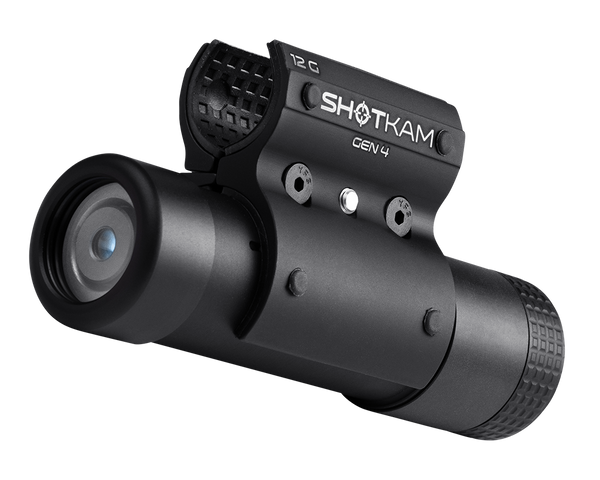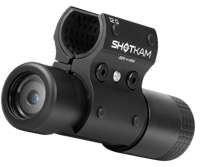Enhancing Trapshooting Performance: The Value of a Coach Under the Barrel

Written by Robert Petersen, PhD
Springtime at the Trap Range: New Shooters and Changing Circumstances
As I write this, spring is here. The daffodils are up, the trap range is open, and a new crew of middle-school trapshooters show up for their first practice, or in some cases, their first shot on a trap field. Everything is new except the same challenges which show up every year. A shooter comes to the range for the first time. Take him to Post 3 and launch some straightaways. He or she can see chips, clean breaks and perhaps even a “smoke ball” as well as learn the meaning of the word “lost.” Experienced coaches look over their shoulders and call out “ahead” or “below.” But it’s difficult to always see exactly where the shot went wrong. That single word doesn’t always help the new shooter as much as we would want.
The Importance of Clear Feedback in Trapshooting
For one thing, it’s not uncommon for a shooter to disagree with the call. After all, the shooter has the best view from over the barrel. So instead of immediately climbing the learning curve, we sometimes see disagreement and frustration. Some promising trap careers end before they even get started. Or maybe a serious gun change happened over Christmas, like trading in granddad’s flat-shooting pump hunting gun for a higher-pointing trap gun. With youth shooting, their bodies change so quickly from one season to another, that every season feels a little like starting over. Or a senior shooter must switch from right-handed to left-handed shooting due to a switch in eye dominance. I shot at (and missed) my first skeet target after 10 years of shooting only trap. I’m sure you can think of other new challenges.
As different as these situations sound, they offer similar challenges: we try, fail, adjust and eventually succeed. After having been carefully trained in gun safety, the shooter stands at the 16-yard line and takes a shot. “Loss.” Okay, okay... everyone remain calm. Tell the shooter whether the lead was too much or too little, whether the shot was above or below the target, correct that, shoot again and break the target.
Although hitting that little 4.25 inch clay frisbee that exits the traphouse at 42 m.p.h. sure isn’t easy, the learning process sounds straightforward. Doesn’t it? Doesn’t the teaching process sound straightforward to teach?
Remember the children’s game, “Hot or Cold”? While Bobby is out of the room, Dad selects the picture of Aunt Sally sitting on the mantle to be the “target.” Bobby walks in and starts randomly moving around the room. Dad says “hotter” when Bobby is moving toward the picture or “colder” when he’s moving in the wrong direction. It doesn’t take long for Bobby to find Aunt Sally’s picture. Yay, it’s fun, let’s all have another slice of birthday cake. But now imagine putting some duct tape over Dad’s mouth. Bobby walks around the room and points to an object, and Dad can only shake his head yes or no. It takes a long time, it’s frustrating, and Bobby may give up before he finds Aunt Sally. It’s “hit or miss,” excuse the pun.
ShotKam to the Rescue: The Coach Under the Barrel
We coaches know that clear and accurate feedback makes all the difference. The coach says “behind.” But it’s complicated. What looks like 3 feet behind to me, may look like 3 inches to the shooter. And, that’s assuming he trusts me. I see parents and shooters arguing about the necessary correction all the time. Instead of learning, the shooter is arguing and getting frustrated. Bottom line, it’s a lost bird and the shooter really isn’t sure why.
How do you correct your mistakes when you don’t understand what they are? Wouldn’t it be nice to show the shooter what above or behind looks like from the front bead’s point of view? We need a coach standing right under the barrel. ShotKam to the rescue. I want to mention that after seeing the value of ShotKam, the team affectionately nicknamed him “Stu.”
This article is about the value Stu, the coach under the barrel, brings to my coaching sessions. Which model? Well, the newer Model 4 has definite advantages over the Model 3. Those are spelled out in detail at shotkam.com/compare and there is a lot of excitement about Gen 4 on the Internet. A Google search for “ShotKam 4 Review” brought back over 86,000 results (I didn’t read them all). Very briefly, compared to Model 3, Model 4 offers improvements in resolution, field of view and zoom, battery life and comes with a USB-C connector which is not only newer technology, but faster and considerably easier to use. All that comes with a higher price tag and a one-ounce increase in weight. My wallet noticed the price increase, but I was pleased to see ShotKam has offered reduced youth team pricing for 2023. That extra ounce was too slight for me to notice.
We use Stu (the ShotKam) in several ways during practices. One way is to record a single post or a full round and step off the field to view the results. We spend the most time on those shots which miss the target completely.
But pay attention to the chips and “smoke balls”. Reviewing each shot while the barrel is still warm gives the student valuable immediate feedback, not only on lost targets, of course, but it also provides valuable feedback on broken targets, something that almost never happened before Stu joined the coaching staff. This was made clear to me when I left my 90:10 trap gun in the truck and took my 50:50 semi-auto out to the skeet field. We trapshooters have a challenge when the targets don’t rise like we expect them to and when they present more extreme angles. I had Stu with me when I shot my first 20 in skeet, but a careful review in the clubhouse revealed, much to my surprise, that all my shots, even the solid breaks, were under the target. I hadn’t realized that until I watched the video.

ShotKam App allows scrolling the video back and forth to see exactly where the reticle (the red dot left of the clay) is when the trigger is pulled.
Making the Most of ShotKam: Enhancing Practice Sessions
With hectic practices, a clean break often gets little more assessment than a smile and a nod. Think about that. Viewing shots using the ShotKam app has the added value of allowing the viewer to scroll back and forth to really understand what is going on, even on the breaks. Young shooters love that feature. Recently I watched a 17-year-old young lady carefully watch the video of her first round, using the ShotKam app to go back and forth over the exact point of trigger pull. She was there for quite a while; learning was happening.
Subsequently, I often publish these videos to YouTube where team members can watch their own round and those of other team members to better envision what a successful shot looks like. My fellow coaches add additional value as they recall the misses in a round which they coached. They post teaching comments (“stay on the gun,” “follow through”) which illustrate the importance of that advice. As students watch the video, I ask them to think about exactly where they would pull the trigger, say “bang” out loud at that point and press spacebar to pause the playback. This keeps them engaged and, if they stop the video at the right frame, they can see the break in action and sometimes even the pellets depending on playback speed, zoom and other conditions.
For first-timers, we turn the oscillator off and throw straightaways. This approach separates the challenge of learning to hit a rising target from the challenge of finding the correct lead. It’s simply much easier to learn trap learning those two skills one at a time. Starting at Post 3, we shoot a few targets and review the video with Stu while it’s fresh. Then correct and repeat the process. Watching those shots just a few times can be enough for the shooter to envision the sight picture as it should be. Then we move the shooter to different posts for practice with different leads.
A variation on the above is to keep the ShotKam Wi-Fi turned on during a single shot with the app connected. Watching the video of each shot this way is truly immediate. Keep in mind the download process reduces speed to 1/3 and saves 100 frames/second. Watching “live” this way is more jittery and uses more battery juice, but the feedback is more immediate. Take your pick.
Precision and Patterning: Uncovering Errors with ShotKam
Out of curiosity, I took a few shots in “Paper Targets” mode which is a setting in the ShotKam app (instead of "Clays" or "Flying Birds"). “Why?” you might ask. Patterning is straightforward. Stand at your measured distance, aim the bead at the center dot on the paper and take a shot, walk to the board, review the pattern and estimate how high the gun points. From there, you might even return to the clubhouse and adjust the rib up or down as necessary. Easy? Well sort of. It’s difficult for new shooters to hold the bead steady. So they aren’t always exactly on the dot even when coach and shooter think they are. “Paper Target” mode exposes these errors very clearly, and the ShotKam ensures that we get it right the first time. Pattern enthusiasts, like me, will love this.
The Power of Immediate Feedback: ShotKam's Impact on Training and Learning
Two final comments. First, I really appreciate the choice of the USB-C cable which is considerably easier to use than older USB versions. It is quite sturdy and reversible. Second, the calibration step is critical. With a shooter eager to break some pottery and watch the video, it can be tempting to rush the calibration, but I promise you will regret it if you do. Not unlike trapshooting itself, using the ShotKam effectively requires precision. Work with Stu, and you will see the difference. After all, he’s right under the barrel.
Robert Petersen’s PhD is in research methods and statistics from the University of Wisconsin. He shot at (and missed) his first trap target in 2010 when he retired to the Ozark Mountains. He has attended trap clinics by Leo Harrison and Harlan Campbell and trained in the mental game by Bob Palmer (Sport Excel) and is a certified mental game coach by Dr. Patrick Cohn (Peak Performance Sports). He has also been a loyal Shotgun Sports magazine subscriber since 2014. This is his fourth article for the publication.
You are reading:











